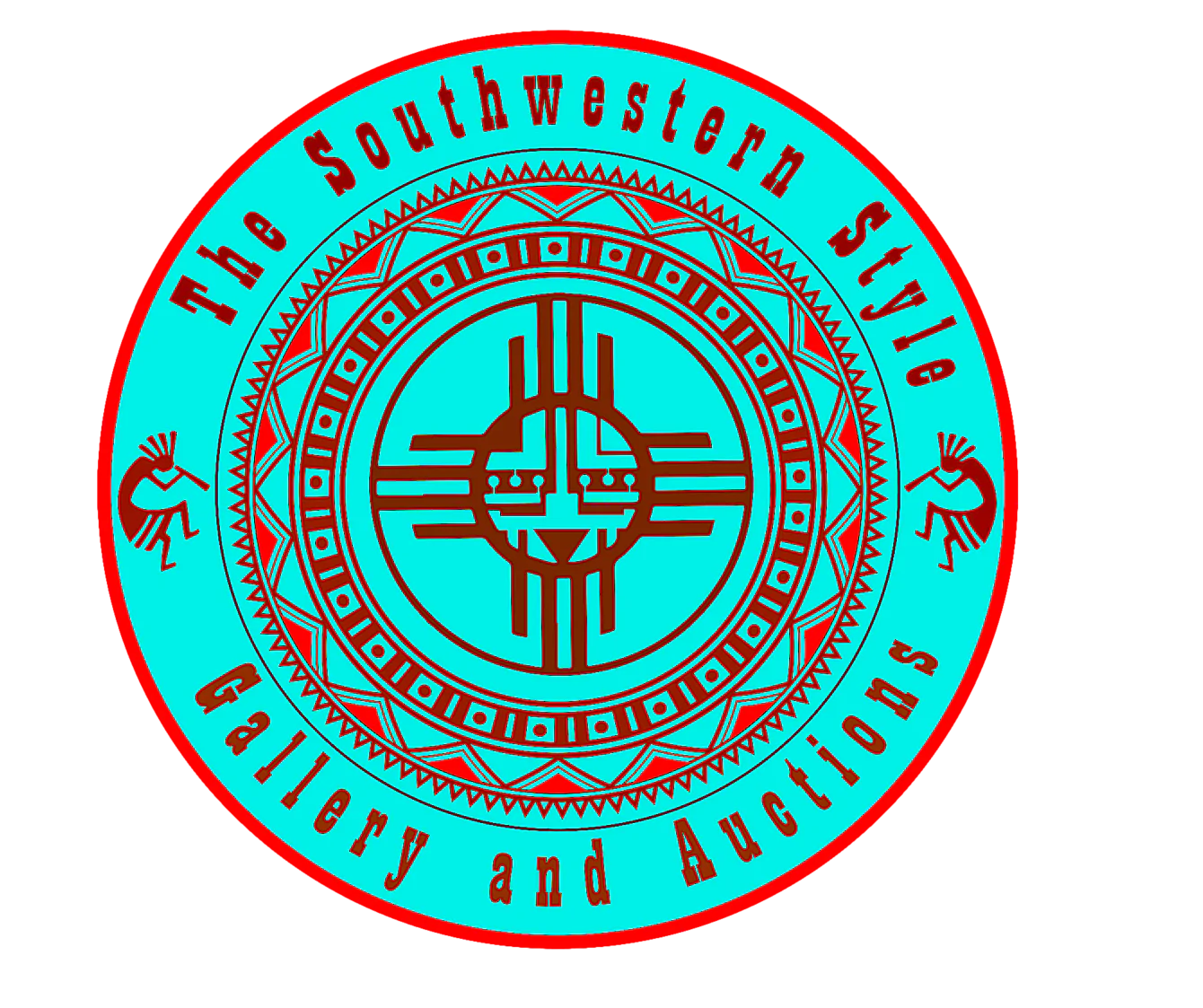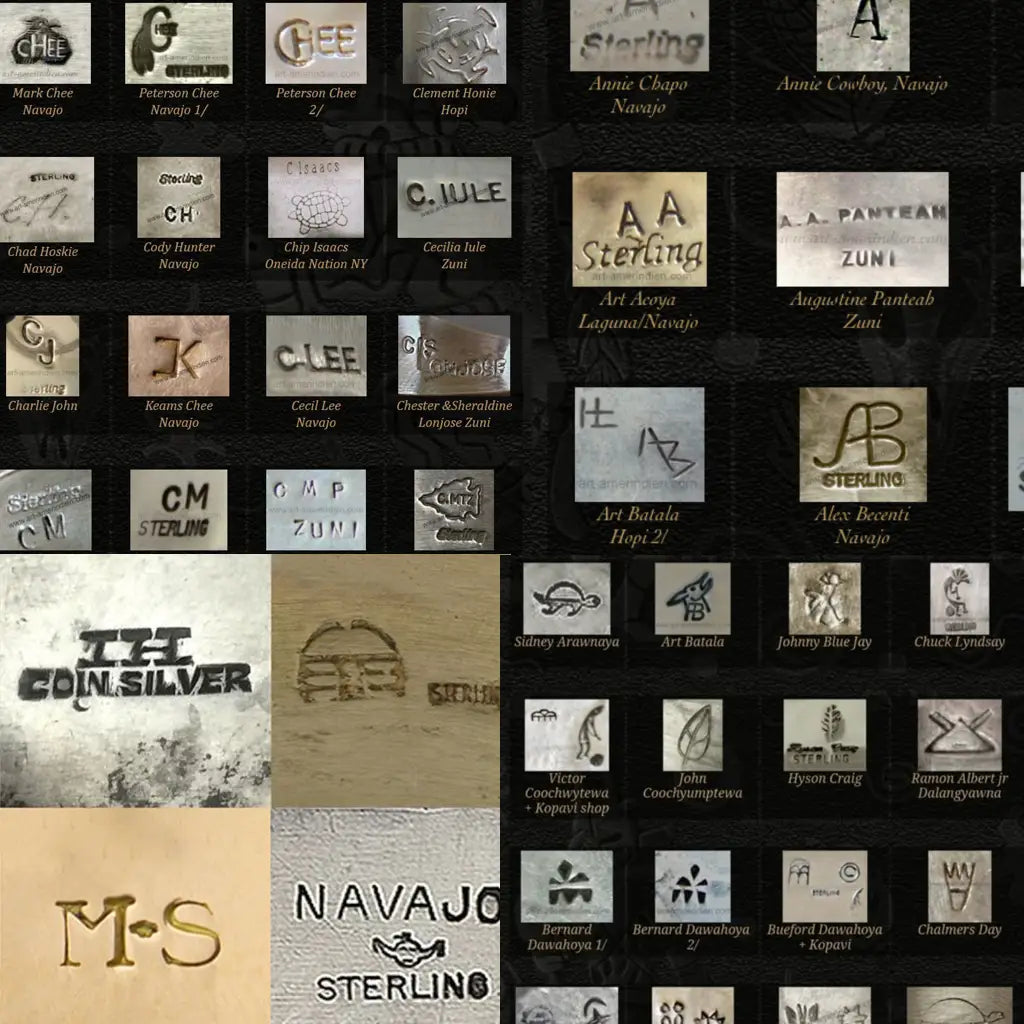🔍 Unlocking the Mysteries of Native American Jewelry: A Guide to Artist Identification and Authenticity
So, you just purchased a striking piece of Native American jewelry—congratulations! Whether it’s a vibrant turquoise cuff, an intricate overlay pendant, or a pair of Zuni inlay earrings, you're now the proud caretaker of not just an accessory, but a piece of cultural legacy. But unless your purchase came with full documentation, or you knowingly bought from a well-documented Native American artist, you may find yourself at the beginning of an exciting journey—the journey of jewelry identification.
For many collectors and enthusiasts, this becomes more than just a task—it’s a thrilling form of cultural detective work. Each hallmark, design element, and material opens a door to a world of tribal tradition, personal legacy, and Southwestern history. Identifying your piece is about more than verifying authenticity—it's about discovering the story, honoring the artisan, and protecting a cultural treasure.
🪶 The Signatures of the Southwest: Beyond Initials
One of the most fascinating aspects of Native American jewelry is the way artists sign their work—or sometimes, choose not to. Unlike commercial jewelry where branding is often front and center, Native American artisans often let the work speak for itself. When they do sign, it is typically subtle and symbolic.
Most contemporary Native American jewelry is signed, but the marks are not always straightforward. Artists might use initials, tribal abbreviations, or symbolic motifs instead of their full names. Among the Hopi, for instance, pictorial stamps are common, often representing clans, family symbols, or spiritual figures. A bear claw, water wave, badger paw, or sun face symbol may all serve as artist hallmarks, making knowledge of tribal iconography essential.
These hallmarks often carry deep cultural meaning. Understanding them requires both a familiarity with tribal symbology and access to hallmark references. In some cases, a single stamp may have been shared by multiple generations of artisans within the same family. Identifying these pieces is like piecing together a lineage—a rewarding, research-intensive endeavor that can greatly enhance a piece's value and significance.
📚 Resources for Hallmark Identification: Books and Online Tools
Fortunately, for those passionate about unraveling the story behind their piece, a wealth of hallmark reference material exists—meticulously compiled by art historians, appraisers, tribal members, and seasoned collectors.
Essential Books for Hallmark Identification:
-
Hallmarks of the Southwest by Barton Wright
A foundational reference in Native jewelry collecting, this book features hundreds of artist marks from the Navajo, Hopi, Zuni, and other Southwest tribes. It is especially valued for its inclusion of pictorial and symbolic hallmarks used by Hopi silversmiths. -
American Indian Jewelry I & II by Dr. Gregory Schaaf
These volumes go beyond simple hallmark identification. They provide detailed biographies, tribal histories, stylistic notes, and full-color images of works by thousands of artists. They are indispensable for identifying both established and lesser-known artisans. -
Native American and Southwestern Silver Hallmarks by Billie Hougart
Hougart’s guide is a collector's favorite for its organization, clarity, and sheer volume of entries. With over 3,500 hallmarks cataloged, it’s a go-to resource for both hobbyists and professionals. -
Indian Jewelry: Fact & Fantasy by Marsha Landreau
This book is especially helpful for new collectors, offering insights into common myths and misconceptions in the Native jewelry world, while grounding readers in historical and legal context.
Top Online Resource for Research and Identification:
-
www.art-amerindien.com – A visually rich hallmark index, frequently updated and organized by artist initials and tribe.
These tools are often cross-referenced in professional appraisals and are essential for serious collectors, dealers, and enthusiasts who want to gain an accurate understanding of their collection.
🔍 When It’s Not Signed: Identification Without a Hallmark
A common misconception is that all authentic Native American jewelry should be signed. In reality, many important pieces—especially those made before the 1970s—bear no signature at all. This was not due to oversight, but to cultural, historical, and market-driven reasons.
Historically, many Native artisans did not see personal signature as necessary, especially when working for trading posts, cooperatives, or tourist markets. The concept of individual branding was less emphasized in favor of collective or tribal identity. Pieces made in the early 20th century or earlier were often sold anonymously or under trader-issued tags.
Even today, entire tribal traditions like those of the Santo Domingo (Kewa) Pueblo continue to emphasize communal artistry over individual recognition. Jewelry from this region—especially heishi necklaces, mosaic inlays, and shell pieces—may remain unsigned yet be highly collectible and identifiable through their unique materials, color palettes, and construction methods.
To assess unsigned pieces, experts often examine:
-
Stone type and sourcing: Is the turquoise from Morenci, Sleeping Beauty, Royston, or Bisbee mines?
-
Technique: Sand casting, tufa casting, overlay, cluster work, or channel inlay.
-
Tool marks: Traditional hand tools leave different textures than modern rotary tools.
-
Construction methods: Handmade bezels, silver solder lines, old patina, and aged natural stones often indicate vintage authenticity.
All of these clues help identify not only authenticity but potential origin, tribal affiliation, and sometimes even the artist or workshop.
🏆 Professional Appraisals: When Expert Insight Matters
While books and websites can take you far, there are times when a professional appraisal becomes essential—especially when you're insuring a piece, establishing provenance for resale, or seeking a value for estate or legal purposes.
At Southwestern Style Gallery, we are proud members of the American Society of Appraisers (ASA) and offer professional appraisal services with a specialization in Native American and Southwestern jewelry. We follow USPAP standards and bring both academic training and years of experience to every valuation.
Our appraisal process includes:
-
Thorough hallmark and stylistic analysis
-
Gemstone and material identification
-
Condition grading and conservation advice
-
Historical and market-based valuation
-
Professional documentation suitable for insurance, estate, or legal use
As members of the ASA, we hold ourselves to the highest ethical and technical standards in the industry. Whether you're an experienced collector or a curious new buyer, our team is here to help you understand, preserve, and properly value your jewelry. Click here for more information about our appraising services.
🛍️ Buy with Confidence: Trustworthy Sources Matter
One of the most important tips for collectors is this: where you buy matters as much as what you buy. Authentic Native American jewelry should always be acquired from a reputable source. Galleries, dealers, and auction houses that specialize in Native jewelry often work directly with artists or tribal organizations and can provide valuable documentation and guidance.
Look for:
-
Certificates of authenticity
-
Artist biographies and tribal affiliations
-
Transparent return and appraisal policies
-
Ethical sourcing practices
Avoid impulse purchases from anonymous online sellers, flea markets, or shops lacking clear provenance. A lower price may come with a high cost in authenticity and resale value.
When you invest in Native American jewelry, you're not just purchasing an object—you’re becoming a steward of culture, tradition, and heritage. Make sure your investment honors both the art and the artist.
✨ In Summary
Identifying and understanding Native American jewelry is an incredibly rewarding pursuit—one that blends art history, cultural heritage, and personal discovery. Whether you're uncovering the meaning behind a hallmark or appreciating the subtle craftsmanship of an unsigned piece, you are participating in a legacy of storytelling through silver, stone, and spirit.
With expert resources, a discerning eye, and guidance from certified professionals, your journey into Native American jewelry will be rich with learning, beauty, and purpose.
At Southwestern Style Gallery, we’re honored to be part of that journey. As members of the American Society of Appraisers, we proudly offer specialized appraisal services to help you better understand and protect your treasured pieces.

